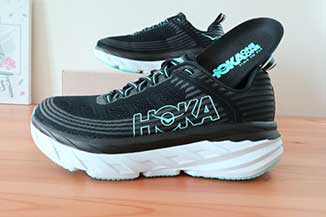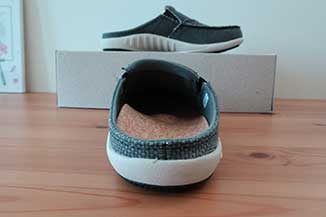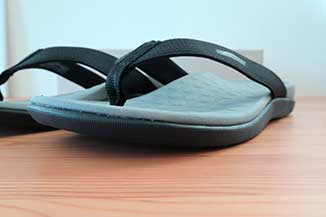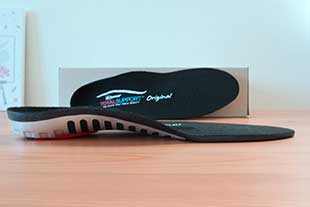There are a number of natural remedies for treating plantar fasciitis. Unfortunately, there is no consensus on the exact treatment for the condition. What works for one person, may not work for another. And from track stars to professional sports athletes, you would think such a condition would get more attention and funding. Of course, with the ever-expanding internet, there is a plethora of information, studies and subjective opinion on how to get rid of this heel pain once and for all.
In any event, you should first see your healthcare professional to determine if you are suffering from plantar fasciitis. Having dealth with hundreds and maybe thousands of patients, they would know best what works based on their practice. One of the downsides of course, is that sometimes you see multiple doctors and get conflicting information.
The solution for not being able to resolve your heel pain? Doing your own research! Being proactive gives you the “ammo” you need for you and your physician to get you moving forward.
That said, here are several natural remedies that are said to have worked for many people in their search to reduce their heel pain.
1. Get Some Rest, Stay Off Your Feet
Resting your feet is a no-brainer. In fact, getting rest seems like the de-facto treatment for just about anything. But for plantar fasciitis, staying off your feet makes sense. The more time you spend on your feet, the more your feet have to support your body weight. It seems counterproductive to expect an inflamed fascia ligament to support the full weight of your body AND get better at the same time.
A general consensus you may see online is to limit activity. This way you give yourself the best chance to heal.
Of course, if you feel you must remain somewhat active, swimming and bicycling may be the best at limiting the weight your feet will need to bear.
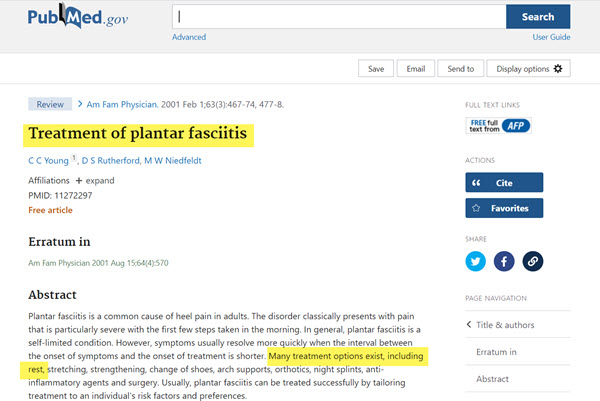
2. Icing Your Feet
Icing is one of the most practical ways of controlling the pain associated with plantar fasciitis. It can be helpful in multiple chronic overuse injuries.
A popular technique is to fill up a water bottle and toss it in the freezer. After it’s good and frozen, take it out and simply roll your feet over the bottle (using it as a self-massager). You can try this 2-3 times per day for 5 minutes each.
Tip: If the bottle starts to get wet, you can wrap it in a light cloth to prevent water soaking up on your floor or carpet. It may also help minimize the irritability of having a freezing cold water bottle pressed against your skin.
Other icing options include…
- Using a ziplock baggie full of ice cubes
- Buying Ice Pack Slippers or Cold Packs to store in the freezer
3. Taping For Plantar Fasciitis
Taping your feet is another natural remedy for plantar fasciitis. It’s not only therapeutic, but also diagnostic in its method of providing arch support. If taped correctly, it is thought to remove some of the load from the plantar fascia while providing medial ankle support.
Taping has been suggested before exercise, before going to work or even right before going to bed.
There are a few different techniques on taping your foot. Here you will find a useful video on how to do it using Kinesiology tape.
4. Arch Support Footwear: All Day Support
Perhaps the most common of all natural techniques for fixing plantar fasciitis and heel pain is to wear arch supports all the time. If you are on your feet all day long and don’t have them supported, you may be aggravating the condition and putting all the extra stress on your fascia. Having a plan to heal you feet starts with minimizing the stress they are under. Ergo, no more going barefoot.
A good shoe with arch support and designed for motion control is a fantastic option for work and daily activity.
Alternatively, you can add an orthotic insert to your existing shoes (as long as they are not worn out, which may exacerbate your condition as an over-pronator or supinator).
To fully support your arches, you should have a set of arch support slippers or flip flops to wear in and around the house. We have reviewed dozens of them that have positive online reviews for resolving heel pain naturally.
5. Night Splints: Stretch The Plantar Fascia
One of the most effective and successfully documented natural remedies for plantar fasciitis are night splints. According to multiple studies, many of the participants report having lower pain scores after using a night splint protocol. Some of them also included the use of orthotics in the treatment.
One of the less restrictive options is the Strassburg sock. It does come with some favorable reviews , but like the bulky splint, may cause some discomfort as the toe is stretched back. Having your foot in a 90 degree dorsiflexed position all night may take a night or two to get used to.
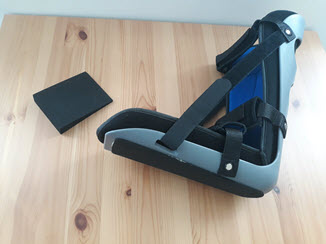
Night Splint Reviews 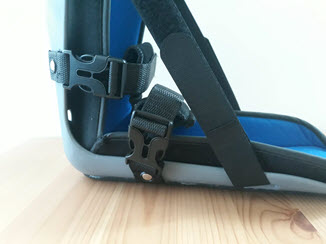
Night Splint
6. Compression Socks: Pressure On Your Foot Arches
There are few plantar fasciitis sock options. They work by adding compression zones around the arch of your foot, which is comforting for some people dealing with heel pain during the day and at work. There is some dialogue online that compression socks and foot sleeves specifically work to increase blood flow, which in turn may help deal with inflammation.
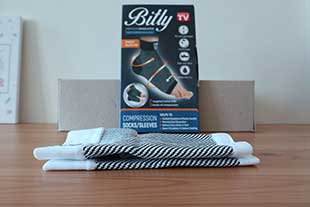
Compression Sock Reviews 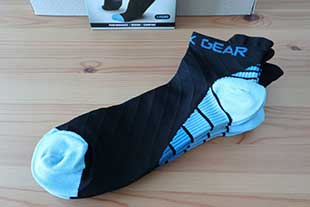
Low Cut Sock
7. Stretching Exercises For Ligaments, Tendons and Muscles
There are many types of stretches and exercises you can do to help your plantar fasciitis. The benefits to stretching include…
- Having a therapeutic effect, which provides some level of instant relief
- It increases the flexibility of the Achilles and calf muscles, which is thought to play a role in plantar fasciitis
Here is a study that supports the use of an Achilles stretching protocol. Upon the conclusion of the study, stretching was determined to be a key element in treating chronic plantar fasciitis.
Links to stretching videos
Rolling Ball Under The Arch Stretch
8. Acupuncture As A Treatment For Plantar Fasciitis
There is some merit to acupuncture as a natural treatment option for your heel pain. Of course, several of the holistic specialists prefer this route over options like steroid injections. Acupuncture is a simple technique that has many potential benefits. Two key benefits for use in patients with plantar fasciitis might include…
- Promotion of blood flow, which encourages healing
- Release of the body’s natural painkillers, such as endorphins and enkephalins
Here is a study that was performed to assess the effect of acupuncture treatment on heel pain due to plantar fasciitis. The results showed significantly reduced pain levels.
9. Nonsteroidal Anti-Inflammatory Medication (NSAIDs)
Nonsteroidal anti-inflammatory drugs are another option that has been used. The most common NSAIDs are Ibuprofen and Aspirin, and are used as pain relievers in addition to reducing inflammation.
You should discuss with your physician the use of any medication.
10. Cortisone Injections
Another option that many people with heel pain use is the injection of cortisone directly into the plantar fascia. It’s a type of steroid and a potent anti-inflammatory. It may potentially expedite the recovery process.
Many doctors and health experts mention limiting this treatment to once or twice at best. Any more may lead to additional foot problems, with increased pain being one of the most common side effects.
What Else Has Worked For People With Plantar Fasciitis
- Hot water foot bath after work
- Changing shoes when the tread is worn
- Physical Therapy (Graston Technique, Shockwave Therapy)
- Surgery
Conclusion
It’s important to know that while there are positive studies and encouraging testimonials from these natural remedies, there is no definitive protocol that works for everyone just the same. Many people working hand-in-hand with their doctors end up using a trial-and-error approach to these simple options. Many podiatrists will have already recommended several of these options for their patients, while several undiagnosed patients simply go their own way. In any case, make sure to partner up with a professional before implementing any of these natural remedies for plantar fasciitis.

